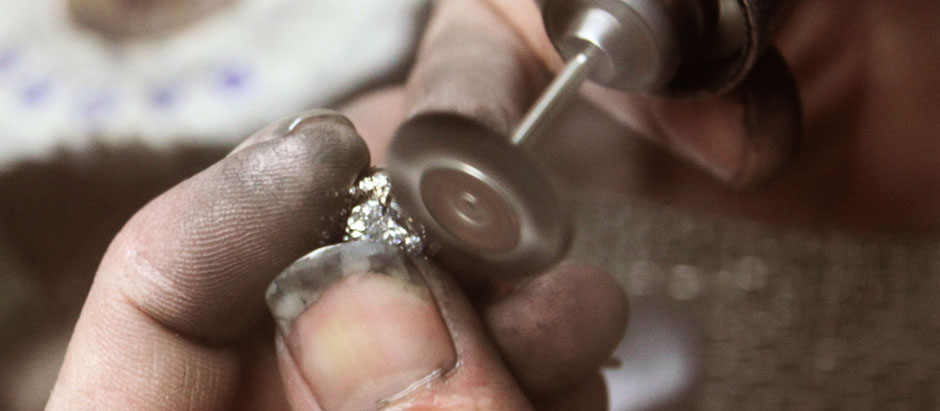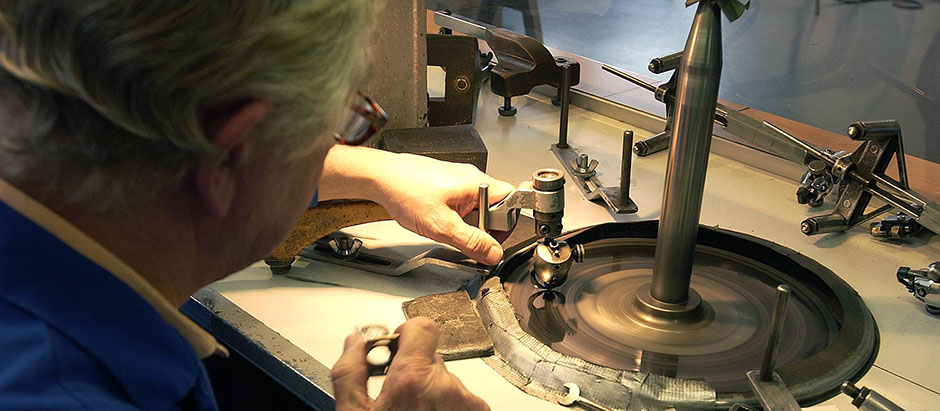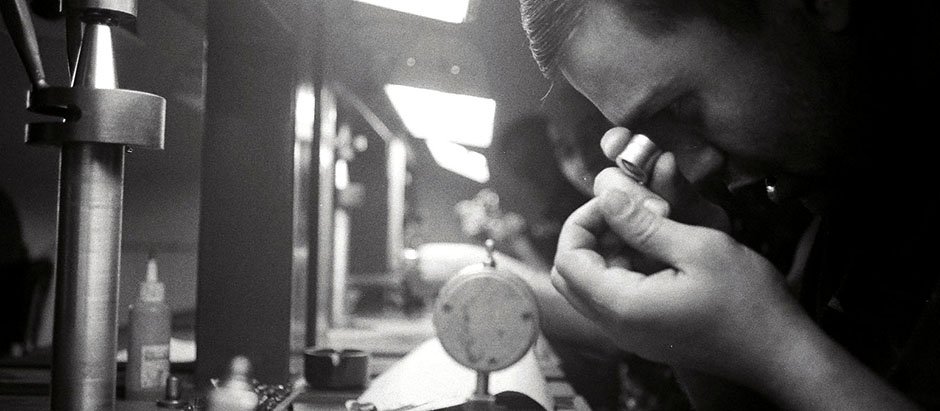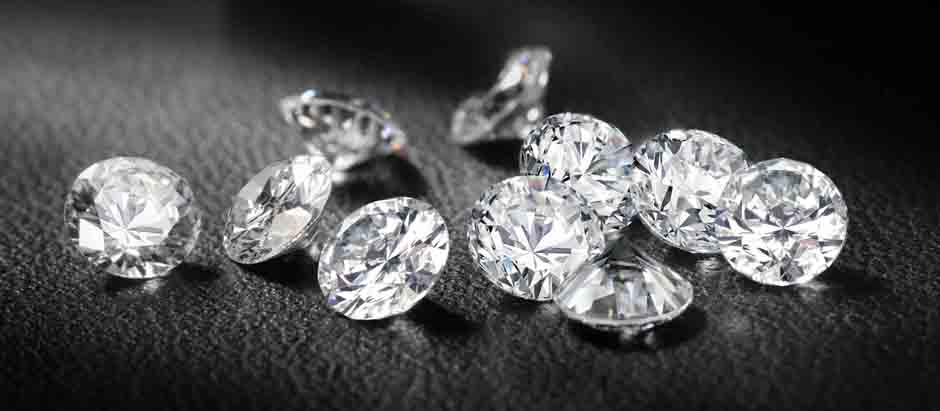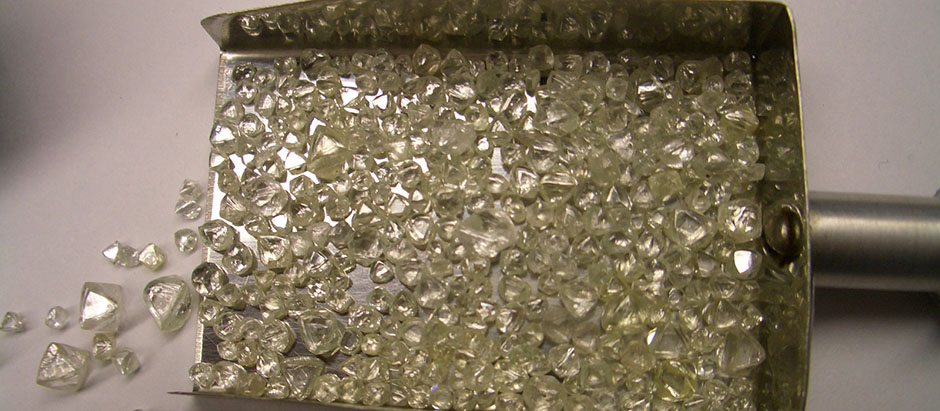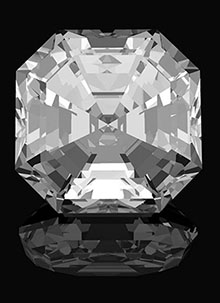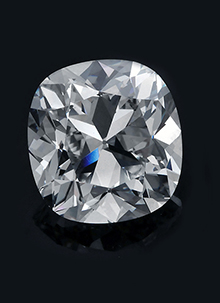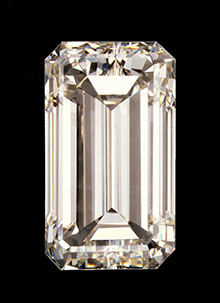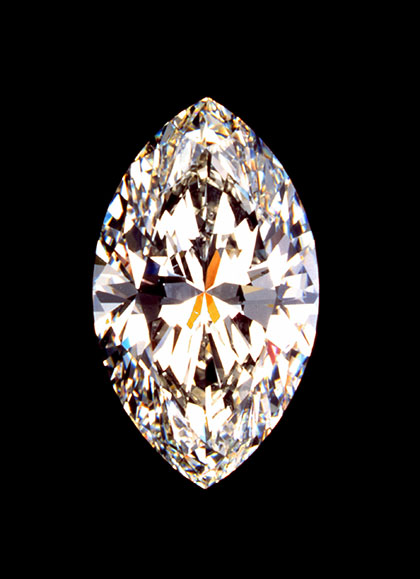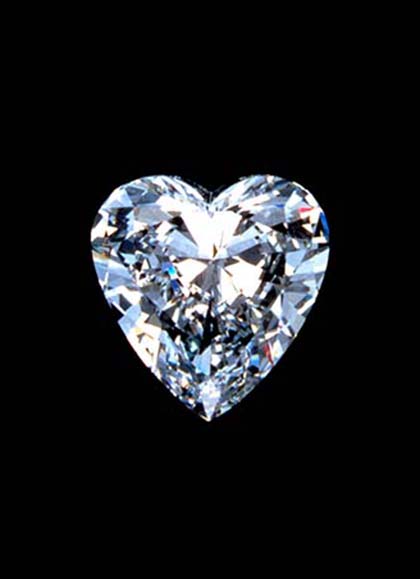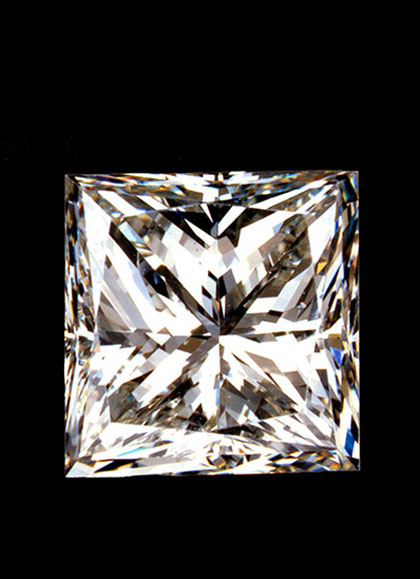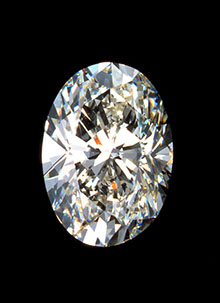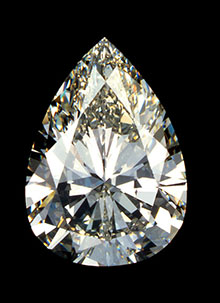-
Clarity

Clarity is a measure of the number and size of the tiny imperfections that occur in almost all diamonds. Many of these imperfections are microscopic, and do not affect a diamond's beauty in any discernible way.
-
Color

Color manifests itself in a diamond as a pale yellow. This is why a diamond's color grade is based on its lack of color. The less color a diamond has, the higher its color grade. After cut, color is generally considered the second most important characteristic when selecting a diamond.
-
Cut

Cut is a diamond's most important characteristic. It has the greatest overall influence on a diamond's beauty. It determines what we generally think of as sparkle. The reason is simple: of the Four Cs, no other characteristic has a greater influence on a diamond's appearance.
-
Carat

Carat is specifically a measure of a diamond's weight, and by itself may not accurately reflect a diamond's size. We tend to evaluate diamond size by viewing it from the top because that is how diamonds are presented to us when set into a ring. Distance in millimeters across the top of the diamond. Diamond's cut grade.
-
Asscher Diamond
The "Asscher cut diamond" was developed in 1902 by the Asscher Brothers of Holland. -
Cushion Diamond
Until recently, it was difficult to find Cushion Cut Diamonds for sale outside of estate sales. -
Emerald Diamond
As may be evident by the name, the "emerald cut" was originally developed for cutting emeralds. -
Marquise Diamond
Sed nisl quam, rhoncus eget molestie sed, malesuada quam. -
Heart Diamond
Though a technical description of the heart-shaped diamond is anything but sentimental . -
Princess Diamond
Princess Cut was designed for getting maximum brilliance from a square cut. -
Oval Diamond
The Oval Diamond has beautiful brilliance that's similar to a round diamond. -
Pear Diamond
The pear shaped diamond is also called the "teardrop diamond" because of its shape.




